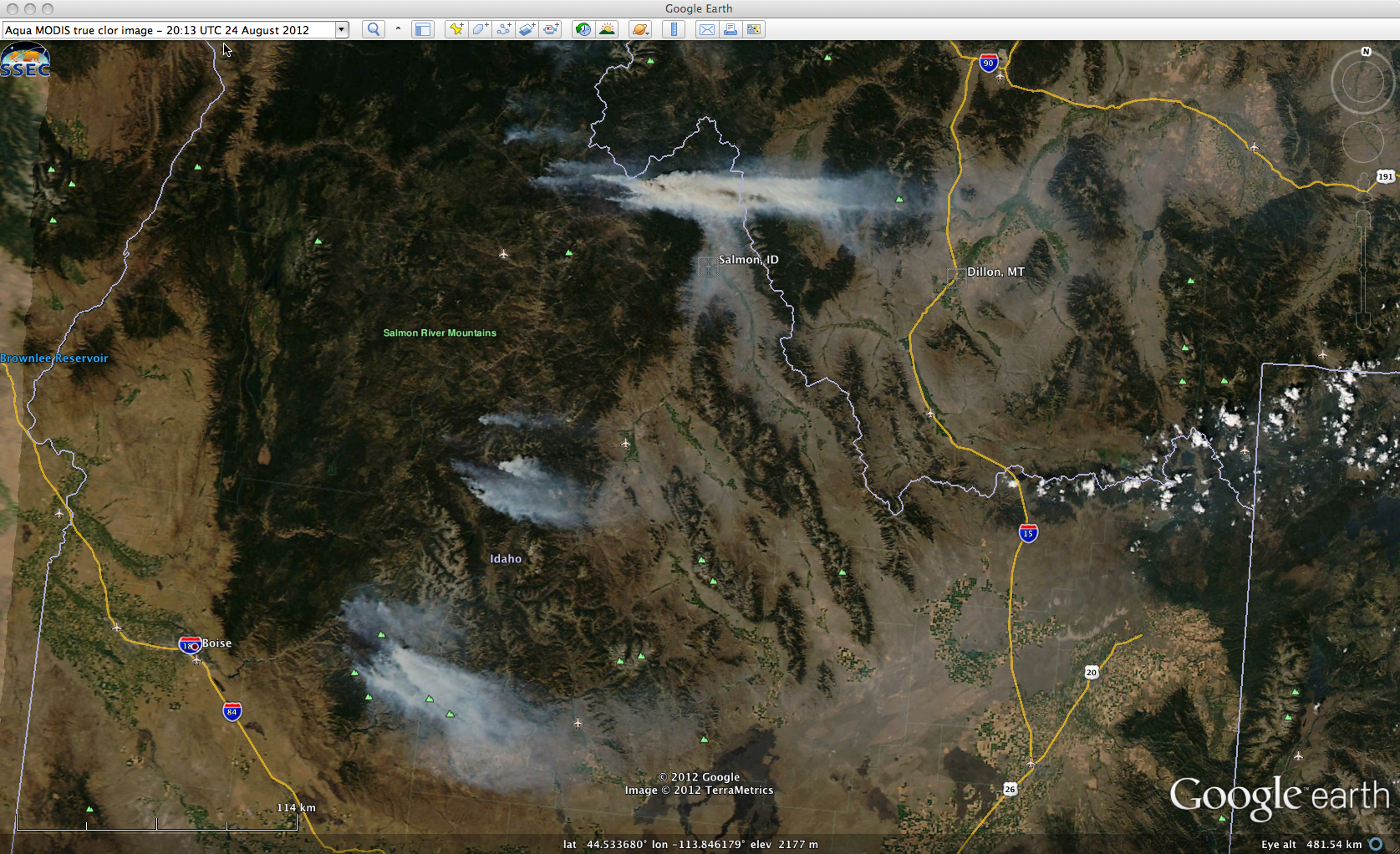Wildfires in Idaho
McIDAS images of GOES-13 0.63 µm visible channel data (above; click image to play animation) showed the smoke plumes emanting from a number of large wildfires that were burning in parts of Idaho on 24 August 2012. Note that some of the low-altitude smoke was being channeled southward through valleys by strong northerly winds. The surface visibility at Salmon, Idaho (surface identifier KSMN) was reduced to 2 miles due to smoke, and at Dillon, Montana (station identifier KDLN) the surface visibility dropped to 1.25 miles.
The GOES-13 satellite had been placed into Rapid Scan Operations (RSO) mode, providing images as frequently as every 5-10 minutes (as opposed to the standard 15-minute image interval).
A 250-meter resolution Aqua MODIS true color image from the SSEC MODIS Today site (above; viewed using Google Earth) showed a detailed view of the smoke plumes at 20:13 UTC.
During the following night-time hours, a comparison of AWIPS images of Suomi NPP VIIRS 3.74 µm shortwave IR and 0.8 µm Day/Night Band (DNB) data (above) demonstrated how the DNB imagery can detect the glow of the actively-burning fires (co-located with the black to yellow to red color enhanced “hot spots” on the shortwave IR image) in addition to the city lights across the region. Stray light contamination was affecting the far northeastern portion of the DNB image.



